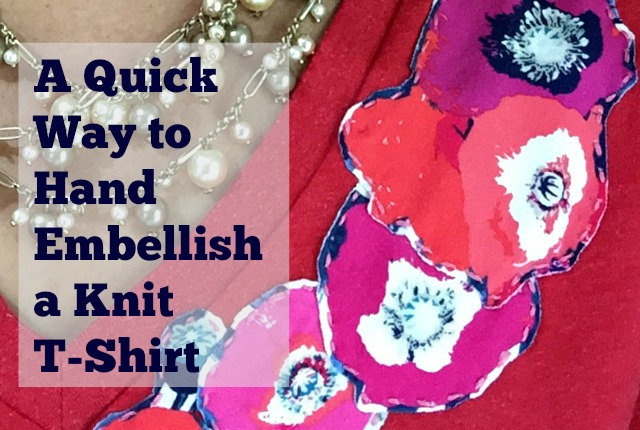
When I was writing about the different types of decorative patches I thought of Alabama Chanin’s embellished knitwear. I know, I know; they aren’t patches, their applique so I didn’t include that idea in the Eight Easy Ways to Make Your Own Patches post. However, I couldn’t not include it on the site.
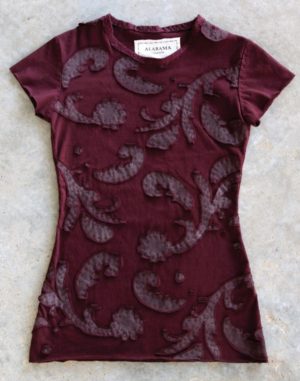 Alabama Chanin designs feature intricate shapes and configurations of the shapes over the entire garment. They are made from two layers of solid jersey from which one of the layers the design is cut and reversed appliqued, by hand, onto the other fabric. Some of the designs apply a couched knit “cord” around the openings and many of the garments are beaded.
Alabama Chanin designs feature intricate shapes and configurations of the shapes over the entire garment. They are made from two layers of solid jersey from which one of the layers the design is cut and reversed appliqued, by hand, onto the other fabric. Some of the designs apply a couched knit “cord” around the openings and many of the garments are beaded.
The Daily Sew’s inspired take of the knit on knit applique is far simpler, a tad easier, less time consuming and really turns out to be something entirely different.
Except for the bold running stitch to which I say there is no ownership of the running stitch.
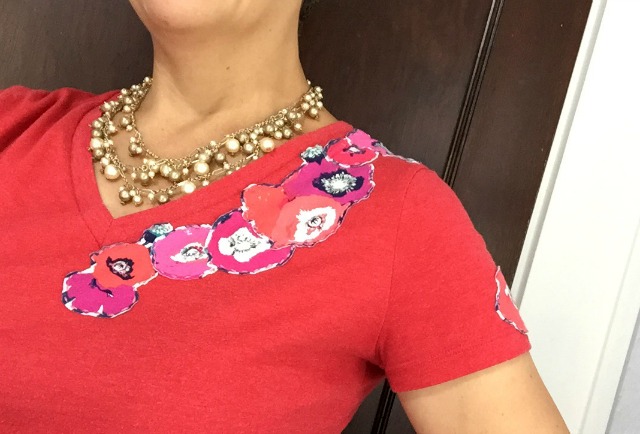
I started with a t-shirt that had a little stain near the neck. The shirt was cheap enough and was worn enough that I could have just been done with it but I wanted to try out this idea in case the next T-shirt that gets stained is my favorite T-shirt.
The design process was as easy as “lifting” a motif off of a printed knit fabric. Though you could cut out any simple shape from a solid or striped knit to applique.
Cut out the motifs or shapes and play around with their placement until you find the arrangement pleasing and you cover any stains or snags or little holes your shirt might have. You can overlap the shapes, especially where a motif ran right up to the selvage of the fabric and was cut off. With scraps, you get a lot of “half” motifs.
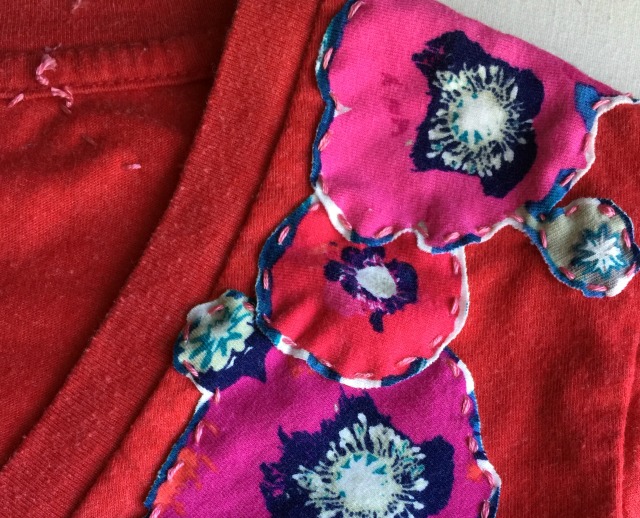
Loosely woven knits will unravel and you’re better off not using them for an applique But if you need to you could either fuse knit tricot interfacing to the back of the fabric before cutting it into shapes and/or you could serge or run a zig-zag stitch around the edge of the shape.
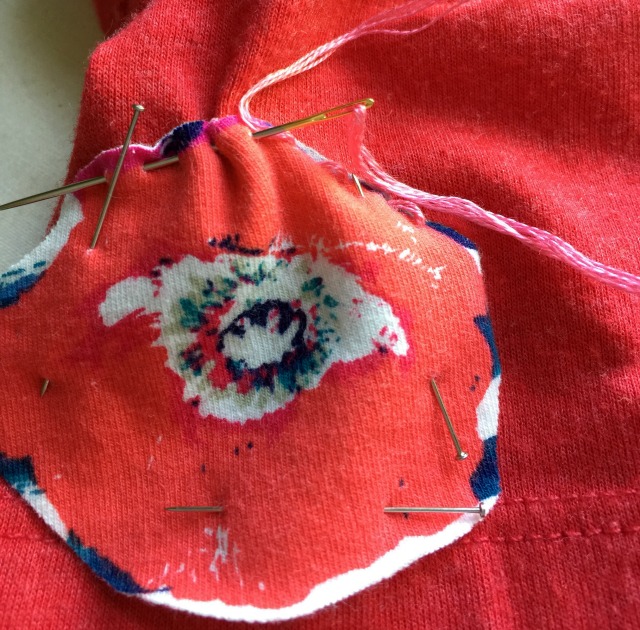
Pin the shapes down. With embroidery floss (I used 4 strands of a contrasting color) stitch down the shapes with a running stitch.

After every few stitches (an inch or so) pull lightly on the fabric where you’ve run the stitches. The knit garment needs to stretch for you to put it on. The embroidery floss does not stretch so you want to leave some slack in your stitches.
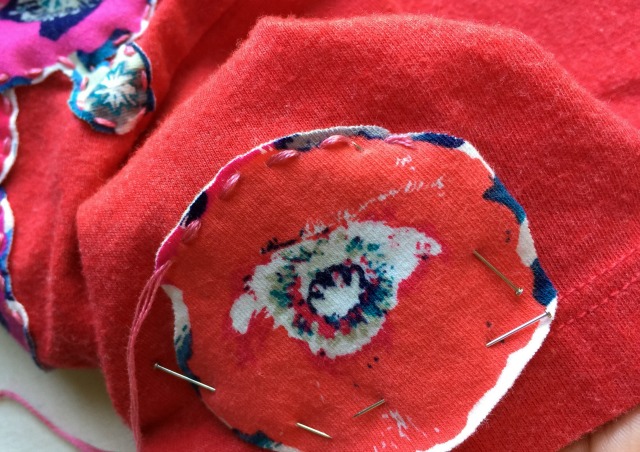
The stitches here are loose enough to allow the shirt to stretch but not so loose as to look sloppy or get caught on random objects you brush by.
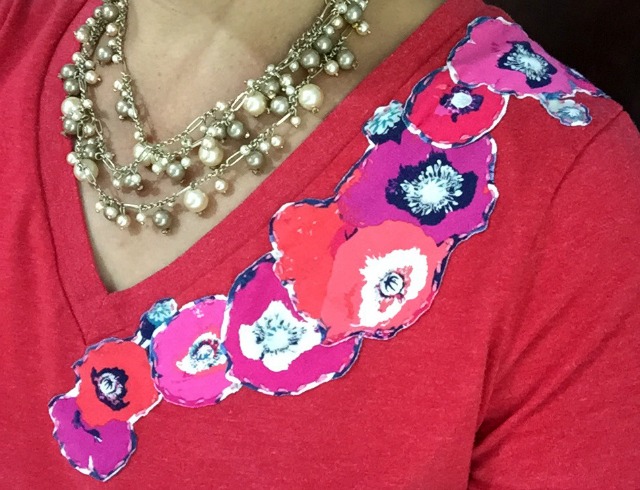
This is an easy, fast project that can update, add some color to, or cover up a hole or stain on any knit garment.
This is especially great for a new shirt which, when cutting out the tag got a little hole in it. Just cut out a little heart, a skull, a dog, a circle, what ever, and sew it right over the hole. Make it a design feature.
Make it a design feature.
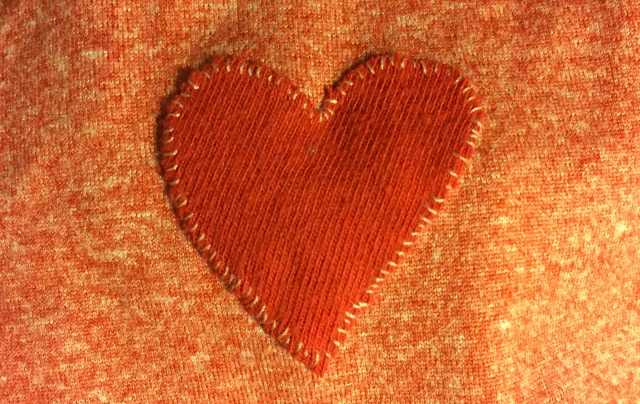
This also works on LuLu Roe leggings that got snagged on the first wear. (These things happen)
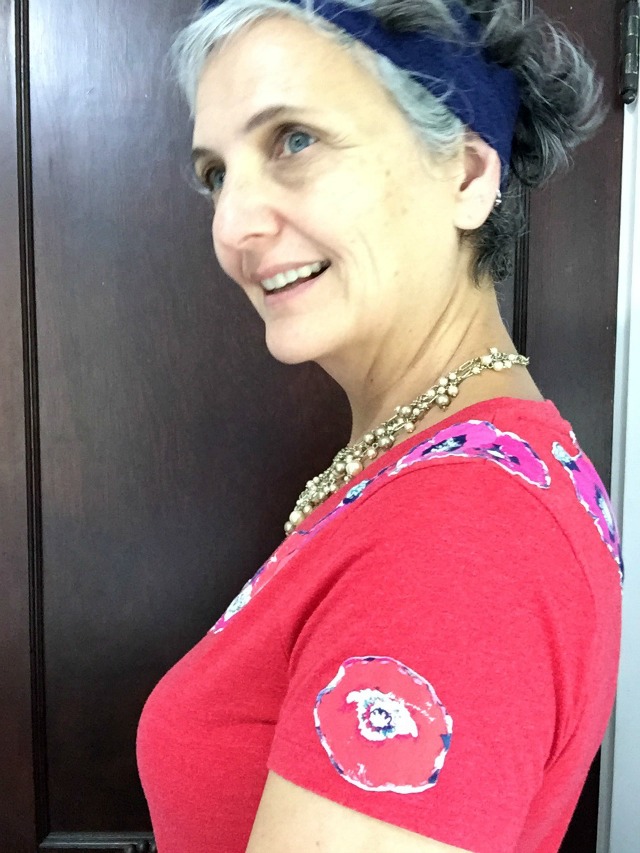

Can I sew a patch made from muslin type material that does not stretch to a t-shirt made out of stretchy material? Should I use a stabilizer? If so, which would you suggest? What about smaller, stiffer patches? Can they be successfully attached to stretchy t-shirt material?
Non-stretch patches can be applied to stretch fabric just remember that where the patch is applied the garment will not stretch. However, you could make the non-stretch fabric patch on the bias (diagonal grain) and then lay it in the same direction of the greatest stretch on the knit garment. A patch cut on the bias will have some stretch, not the same amount as a knit, but some.
Stabilizer will help you sew a patch onto a stretchy fabric. Perhaps a tear-away stabilizer is best, even tissue paper (the thin gift wrapping kind but use white so no chance of dye transferring to the fabric)
And really, smaller patches, when they don’t stretch like the garment they’re applied to would be better than large patches. A smaller patch means a smaller area that no longer stretches so the garment retains more of its original function.
If you have an old t-shirt you could do some experimenting with it. The only trouble I see is patching an area you need to stretch in order to put the garment on or take it off. Good luck and let me know how it works out if you have a chance.